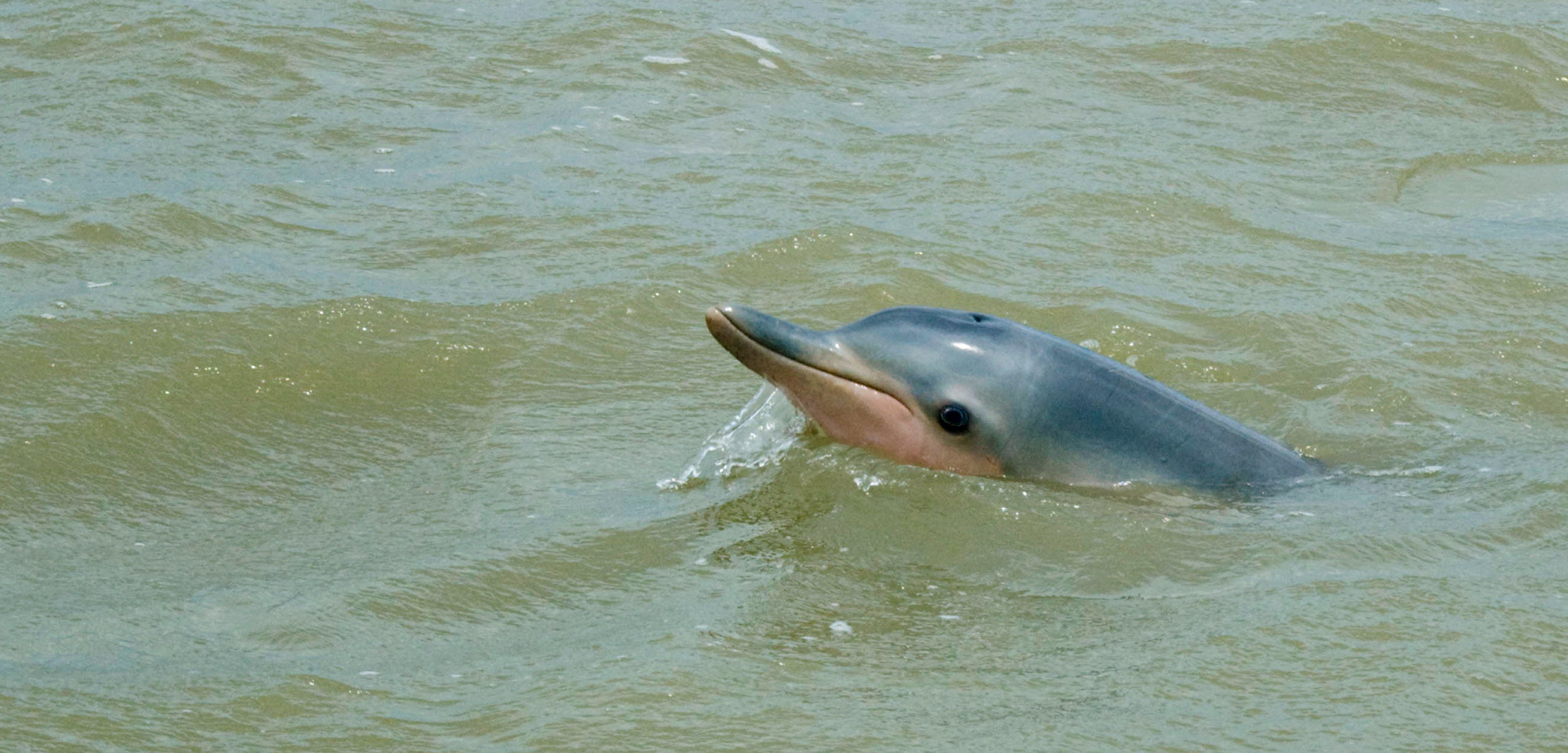Guiana Dolphins Are Unintended Victims of Venezuela’s Economic Crisis
With sky-high inflation rates and crumbling social support, impoverished Venezuelans are increasingly targeting the struggling species.
Article body copy
The Guiana dolphin, or tonina as the locals call it, is an iconic species in Lake Maracaibo, an inlet of the Caribbean Sea in Venezuela. But the future for these small pinkish-bellied dolphins is far from rosy. Foraging for fish along the shore, the dolphins often encounter fishermen doing the same—with tragic results. With a patchy distribution along the coastal areas of South and Central America, isolated populations of Guiana dolphins are especially vulnerable to human pressures. Threatened by overfishing, by-catch, boat traffic, and frequent oil spills, Guiana dolphins are facing an increasing threat—deliberate hunting.
Although Guiana dolphin meat has historically been eaten in Venezuela—served fried, stewed, or inside pastry balls—those meals have typically been the result of incidental catch. Yet as the country has sunk into a deep economic crisis over the past decade, Guiana dolphins are increasingly falling victim to by-catch and intentional hunting. Conservationists fear that the population in Venezuela cannot withstand the pressures for much longer and could be headed for local extinction.
Venezuela’s food insecurity is among the highest in the world. One in three people don’t have enough food to meet basic nutritional requirements. Electricity shortages are common, with outages lasting up to a week. Gangs and rampant piracy, coupled with a shortage of fuel for boats, have dealt an especially severe blow to fishing communities—particularly on Isla Zapara, in the northern part of Lake Maracaibo.
“Sorry, I eat tonina sometimes,” says the daughter of a fisherman who asked to remain anonymous, with a shy laugh. “The situation is critical,” she says. “We are a fishing community dependent on fish for survival, but without gasoline we cannot go out fishing. A month ago, a little girl passed away because of malnutrition.”
Since learning about the dolphins through the work of a local environmental NGO whose name translates to the Working Group on Sea Turtles of the Gulf of Venezuela (GTTM-GV), her family has been sympathetic to the plight of the tonina and tries to avoid catching them. But because they often struggle to put food on the table, if a dolphin gets entangled in their fishing net, they eat it. The shortage of gasoline also means that to save fuel fishermen stay closer to the coast than before—making encounters with the dolphins more common.
Hector Barrios-Garrido, a marine biologist at Venezuela’s Universidad del Zulia, suspects that faced with a lack of food, many people are turning to wildlife for sustenance. Along with Guiana dolphins, pelicans, turtles, iguanas, and manatees can also turn up on the table. Certain restaurants even feature a “special meal” made from illegally hunted animals.
A recent study led by Yurasi Briceño, a graduate student at the Venezuelan Institute for Scientific Research, estimates that roughly 180 Guiana dolphins have been caught annually in the last few years, to be eaten or used as shark bait around the lake. The true capture rate could be even higher, as the study only concentrated on 10 percent of the fishermen in the region.
The plight of the dolphins in Lake Maracaibo has become so dire that it has attracted the attention of the International Whaling Commission (IWC). “With this rate of hunting, it is possible that only in five or six years the population will decline in a very dangerous way,” says Fernando Trujillo, a cochair of the IWC’s small cetacean subcommittee.
While much of the dolphin’s plight can be blamed on Venezuela’s stark economic crisis, scientists fear that the hunting pressure has led to a cultural shift that may outlast the current economic woes. Dolphins used to only be eaten when they were the victims of by-catch. “Now, direct hunting—that’s the new thing,” says Briceño. “We have pictures of the fishing boats full of fish and crabs. So we know that [hunger] is not the main reason. It is more that they like the taste.”
“If a couple of generations are doing this, that’s going to be the new tradition. And that’s not good, because we are modifying not just the ecosystem, but also the culture of these people,” says Barrios-Garrido. The cultural change is already visible, with young fishermen being more interested in hunting Guiana dolphins than their older peers, he says.
Guiana dolphins are protected in Venezuela, but the law is rarely enforced these days. The rangers from the Ministry of Environment and Natural Resources who would normally be tasked with keeping illegal fishing at bay have mostly left their jobs after years of hyperinflation (with annual inflation rates of several thousand percent) have made their wages practically redundant.
Briceño is determined to save the dolphins. In the absence of help from the government, she sees the solution in education. Her team has recently received a grant from the IWC to continue their research, and to educate locals in the southern part of Lake Maracaibo on the importance of protecting Guiana dolphins and manatees—expanding on the work done by GTTM-GV in the north around Isla Zapara. Briceño and her team also plan to promote dolphin watching as an alternative source of income for the fishermen.
Thanks to the environmental work of GTTM-GV, the locals on the impoverished and relatively remote Isla Zapara are more conscious of the tonina than before. But in the current situation, they have to put their needs first. It is clear that truly averting the crisis that is threatening the dolphins is not possible without also tackling the crisis of the nation—or, as Barrios-Garrido puts it: “You cannot design any conservation action without including the people.”

